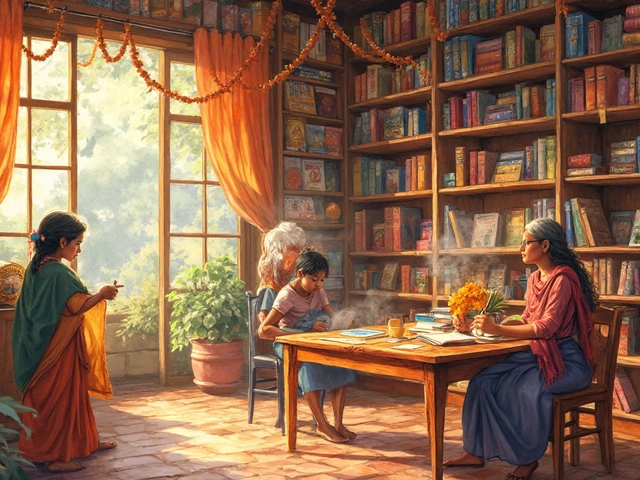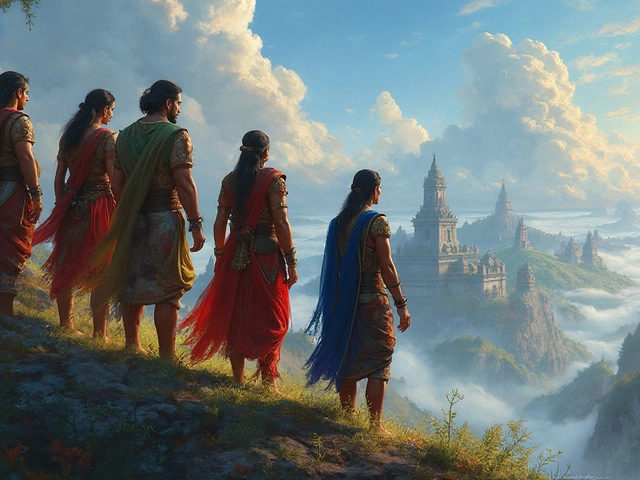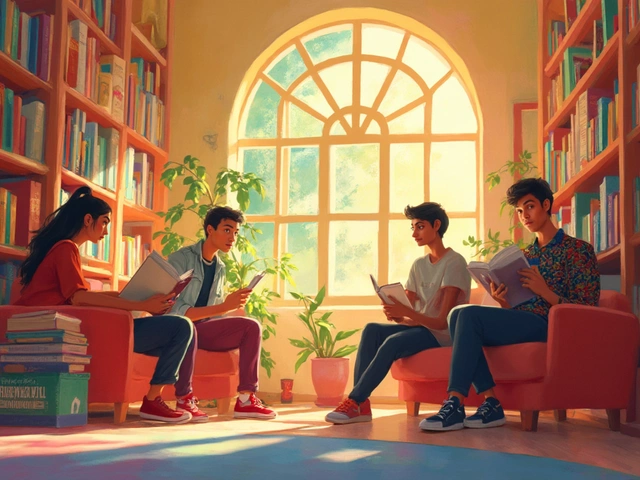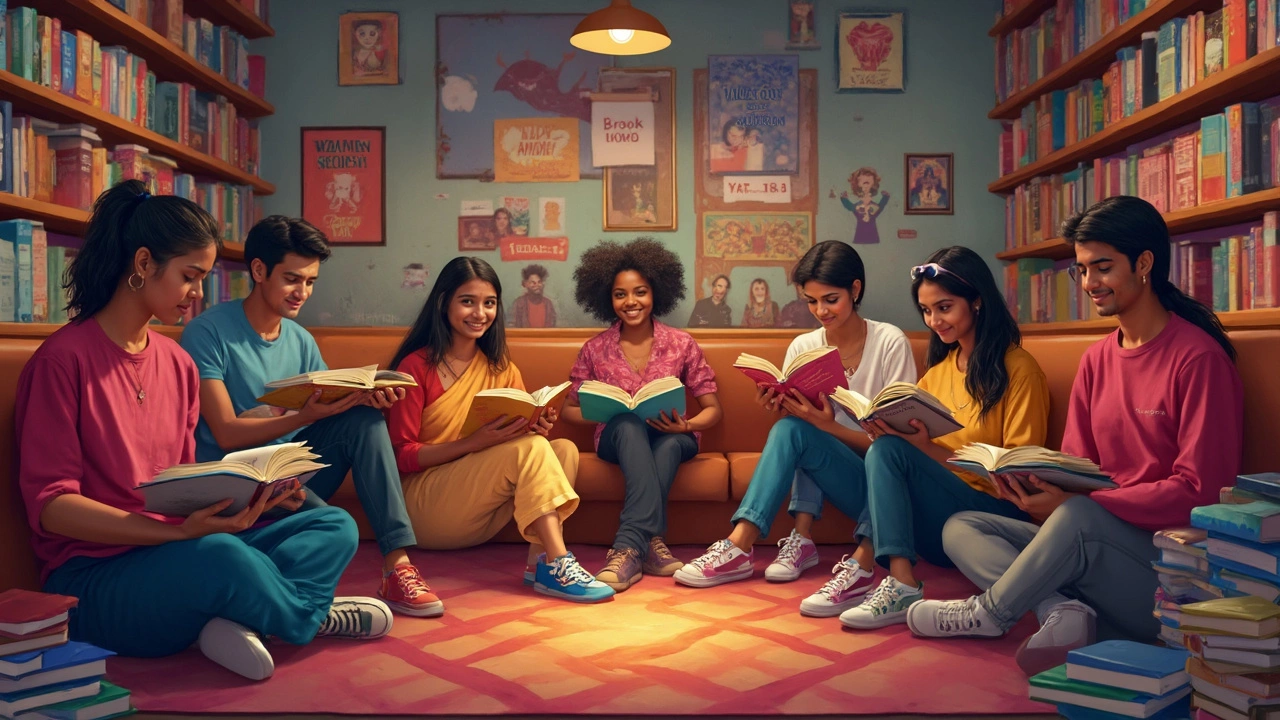
Here’s a wild fact: In 2024, more adults than teens bought YA novels. Surprised? You’re not alone. YA—short for Young Adult—books are everywhere: on TikTok feeds, bestseller lists, streaming shows. Libraries can’t keep them on the shelves. It's not just about wizards or vampires anymore. So what’s the secret sauce that keeps everyone—whether you’re fifteen or forty—flipping those pages deep into the night?
YA Books: Raw Honesty Meets Big Imagination
YA stories don’t tiptoe around the tough stuff. They hit you right in the feelings—grief, heartbreak, crushes, hope, and the trainwreck side of growing up. There’s this unfiltered, punchy honesty in YA that grown-up fiction sometimes skips. Look at Angie Thomas’s 'The Hate U Give'—it takes on police brutality through the eyes of a Black teenager, and it doesn’t sugarcoat pain or confusion. Or think of John Green’s 'The Fault in Our Stars.' That book made millions weep because it refuses to dodge the raw edges of love and loss. It’s not just heavy topics though. YA also does messy friendship, self-identity, and first times—with a kind of emotional clarity that feels real, not forced.
Imagination is also front and center. Authors like Leigh Bardugo ('Six of Crows') or Marie Lu (‘Legend’) create fandoms as loyal as pop bands. You’ve got characters launching prison breakouts, surviving haunted houses, or plotting revolutions on other planets. YA world-building is colorful and kinetic, but under the magic, these stories ask: Who am I? Where do I fit in? That’s universal. No wonder adults sneak YA onto their Kindle. Fiction for grown-ups can sometimes drag with slow tension or jargon. YA strips that out; every page aims for a gut punch or a laugh or a gasp. The high stakes and fast beats make for perfect escape after work or school.
Maybe you grew up reading Harry Potter or 'The Hunger Games.' The YA section wasn’t just a library shelf—it was an escape hatch when the real world felt too predictable or too much. The cool part? That feeling sticks, even as you age. According to an NPD BookScan report for 2023, around 55% of YA sales came from adults 18-34. Publishers know this and market accordingly. TikTok’s #BookTok trend shot YA titles like 'The Ballad of Songbirds and Snakes' to viral status, proving that teenagers aren’t the only ones craving coming-of-age rollercoasters. There's even a word for adults who adore YA—‘YA crossover readers’—and their numbers keep climbing. The lesson? If a book hits the emotional jackpot, age doesn’t matter.
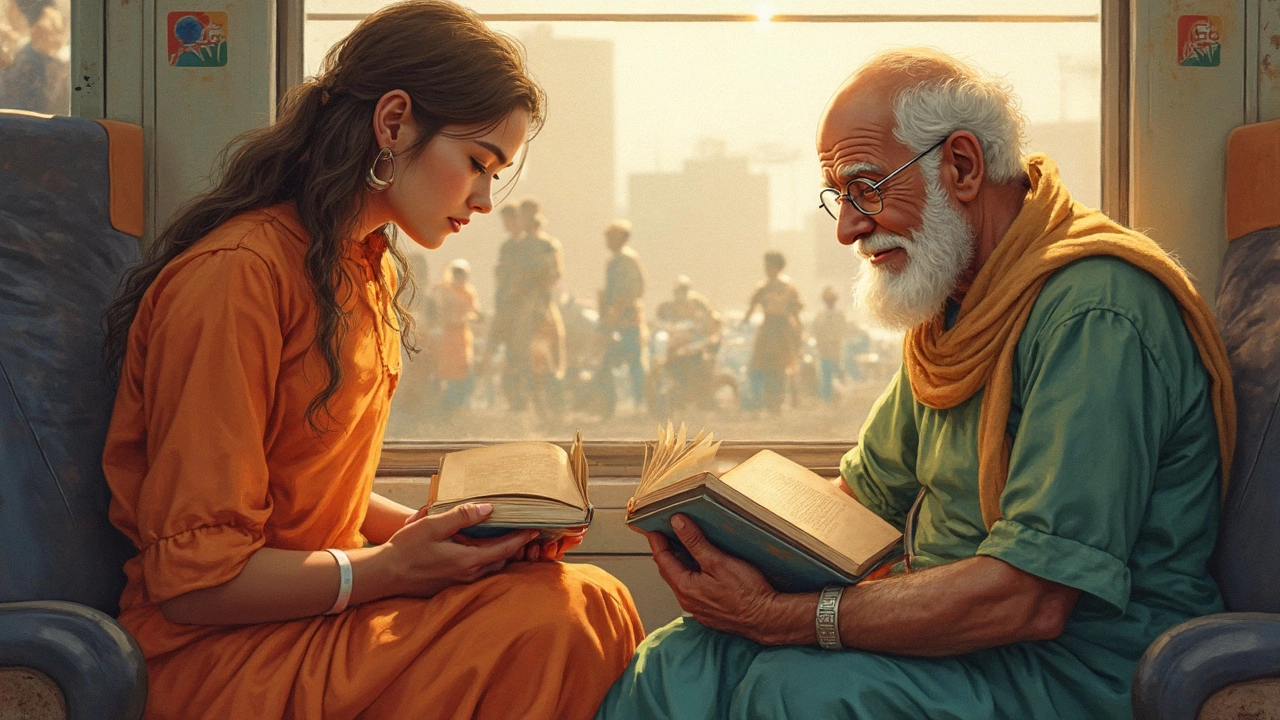
Relatable Characters, Fast-Paced Plots, and Real Diversity
Remember feeling like no one got you when you were a teen? YA authors lean in hard to that feeling—not with clichés, but with characters who are awkward, stubborn, scared, or silently epic. Protagonists in YA books rarely have it together, and that’s kind of the point. They mess up, fall in love too fast, fight with parents, or doubt everything, from the color of their hair to the meaning of life. But through these flawed, fun, and raw voices, YA novels capture experiences that feel deeply honest, even when dragons or dystopian regimes are involved. It’s not about perfection—it's about the ride.
Pacing is another game-changer. YA books get to the point, toss out extra details, and jump into the action early. If you’ve read Adam Silvera’s 'They Both Die at the End,' you can’t help but get sucked in by the ticking clock—every scene demands your attention. In a world hooked on short videos and non-stop notifications, that fast, vivid storytelling just clicks. Nobody wants to slog through a hundred pages to finally care about the hero. YA hooks you right away and doesn’t let go. That’s why these books land movie and Netflix deals so often—think ‘Shadow and Bone’ or ‘One of Us Is Lying.’ The stories leap off the page and onto screens because they move at a breakneck, binge-worthy pace.
Diversity is another reason teens (and let’s face it, adults) feel seen by YA. In the old days, the genre could be pretty narrow—mostly white, straight, cisgender. Now? You’ll find books with Muslim teens struggling with identity, Latinx kids navigating immigration, queer characters finding their voices, and pretty much every culture and background you can imagine. According to a 2024 American Library Association survey, over 60% of YA books published in the last two years featured a protagonist of color or from the LGBTQ+ community. Read Elizabeth Acevedo or Jason Reynolds and you’ll see stories layered with authentic voices and real conflicts. This explosion of representation makes it easier for everyone to see themselves, not just as sidekicks, but as main characters with their own journeys. When teens spot themselves in these pages—or adults remember how it felt not to fit in—YA becomes more than entertainment. It turns into a mirror and a lifeline.
YA authors aren’t afraid to tackle messy topics: mental health, racism, climate anxiety, body image, grief. This feels revolutionary given how squeamish adult fiction can sometimes be about the chaos of adolescence. Kelly Yang’s 'Front Desk' dives into immigrant struggles and work ethics at a young age. Nic Stone’s 'Dear Martin' tackles profiling and prejudice head-on. Even fantasy stories like Tomi Adeyemi’s ‘Children of Blood and Bone’ grapple with oppression and injustice. It’s not just about problem stories though—YA also gives readers hope, showing characters who learn to stand up, rebel, and survive. Reading these books, you realize: struggle is messy, but you’re not alone.
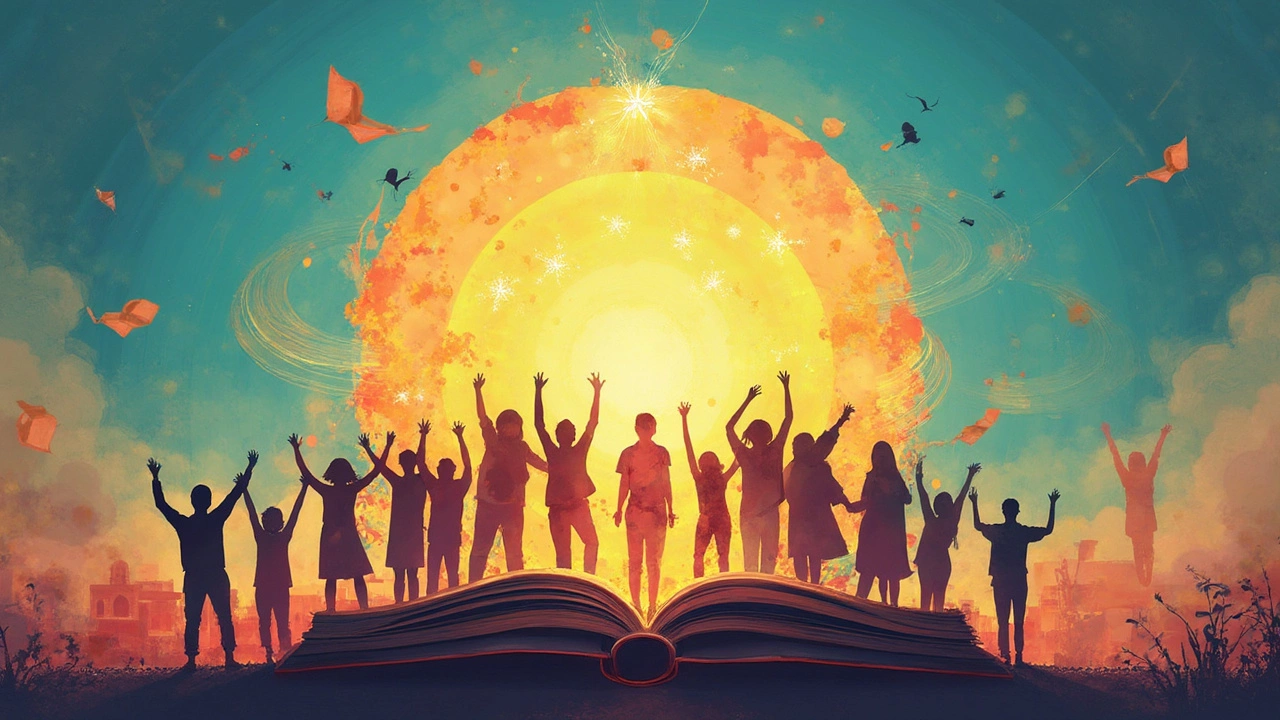
How YA Changed Reading—and Why It’s Here to Stay
It’s wild how much YA has exploded. Back in the 1990s, the genre was a corner shelf between 'Goosebumps' and 'Sweet Valley High.' Now it props up the entire publishing industry. In 2024, the global YA market pulled in nearly $1.9 billion, with a projected jump as more authors hit TikTok trending lists. New releases like 'Iron Flame' by Rebecca Yarros sold over 400,000 copies in its first week—most hardcovers, and most to adults. The boundaries between teen and adult fiction are gone. Even Hollywood is cashing in. Every YA bestseller gets optioned for streaming; some—think Leigh Bardugo’s Grishaverse or Jenny Han’s 'To All the Boys I’ve Loved Before'—spawn multi-season shows and movie franchises. That makes YA both trendy and timeless.
Apps and online fandoms fuel the hype. TikTok, Instagram, and Discord groups drive recommendations in real time, way faster than old-school book clubs or reviews. A 2024 Pew Research Center study showed that 46% of YA readers discover new titles through BookTok or social media, and 62% trust viral video reviews more than publishers’ blurbs. This digital wave lets teenagers and twenty-somethings shout about new releases, help niche authors break out, and demand more diversity or representation. Authors are more approachable, too—you can DM your favorite writer or see behind-the-scenes draft snippets. That connection makes the reading experience far less lonely.
YA is also impacting how people view reading itself. A lot of reluctant readers, especially boys, find YA hooks them in ways textbooks never could. Series like 'Percy Jackson' or 'The Maze Runner' turn into gateways for struggling readers. Librarians noticed: in 2024, checkouts of graphic YA novels spiked by 42% compared to 2019, and classroom teachers report increased test scores among kids who read YA for fun. This isn’t just anecdotal—educators are building curriculums around bestsellers like Angie Thomas because they drive honest classroom discussions about race, society, and current events. YA isn’t just a hobby; it shapes empathy and literacy skills across age groups.
| Year | YA Book Sales (Millions) | % of YA Buyers Age 18–34 |
|---|---|---|
| 2015 | 37.2 | 32% |
| 2020 | 44.6 | 45% |
| 2023 | 49.1 | 55% |
| 2024 | 53.9 | 59% |
Worried you’re too old for young adult fiction? Forget it. YA’s mix of heart, authenticity, and quick-fire plotting speaks to anyone who’s ever felt weird, restless, or stuck. And with YA books breaking down old boundaries around who can be a “main character”, readers find belonging and hope right where they need it. If you’re a parent, teacher, or just someone who misses the bite of first times, try picking up a YA book this week—see why millions can’t put them down. If you want to explore, start with the new indie darlings or hit the latest viral BookTok sensation. The magic of YA isn’t going anywhere. It just keeps expanding, page after page, year after year.
